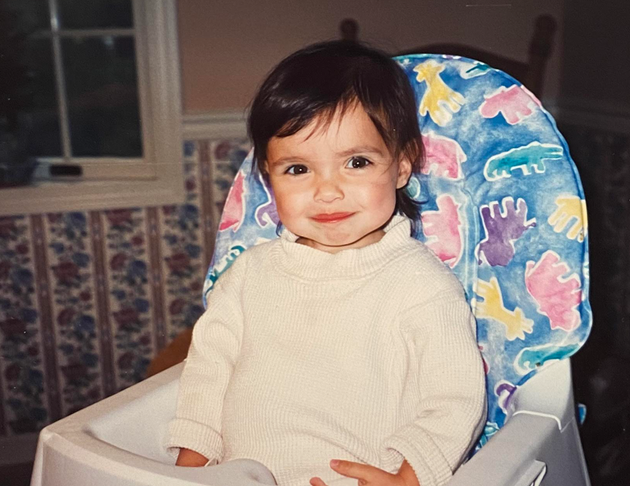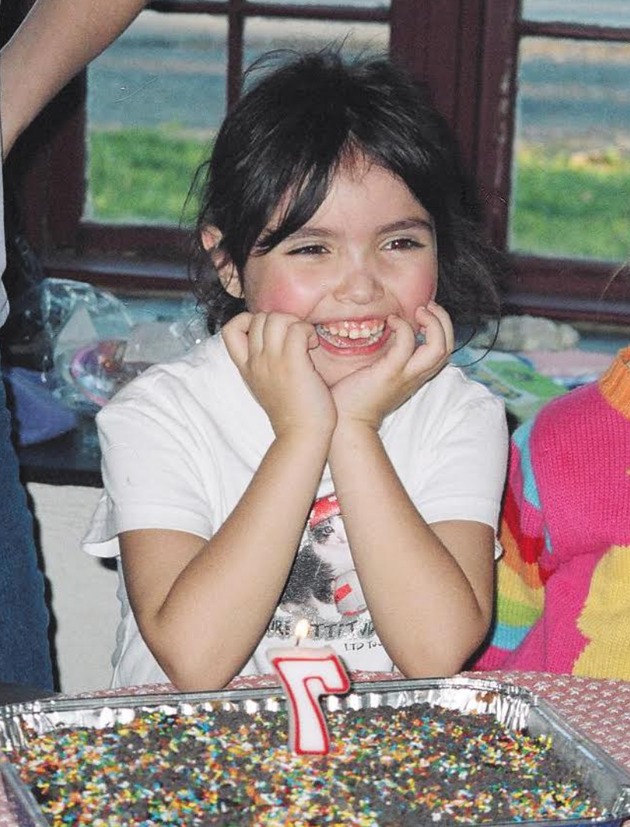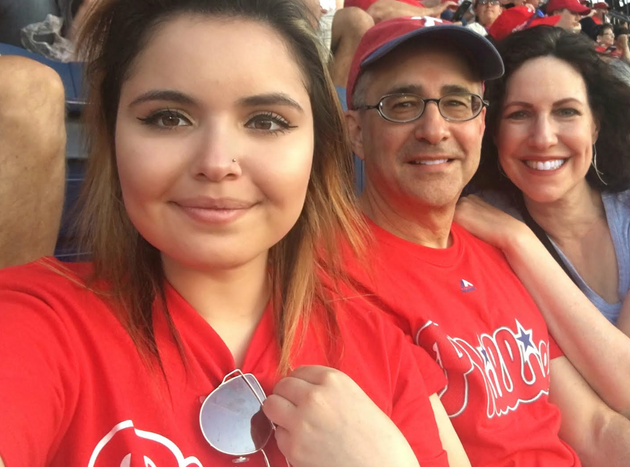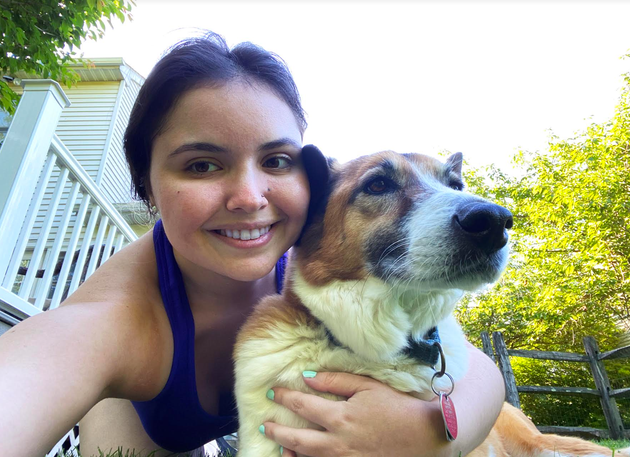 The author’s daughter Sammie in early 1999, roughly six months after being diagnosed with cystic fibrosis.
The author’s daughter Sammie in early 1999, roughly six months after being diagnosed with cystic fibrosis.My daughter, Sammie, was three months shy of her second birthday when she was diagnosed with cystic fibrosis (CF). All I knew about CF at the time was that long ago, on my dad’s side of the family, a couple I never met lost two children to a disease.
Our paediatrician gently broke it to us before sharing the “good news” that the average lifespan of a person with CF had reached 31 years. My husband and I sat in stunned silence. I was 31.
Cystic fibrosis is a progressive genetic disease that clogs the airways, pancreas and other organs with a thick, sticky mucus, impeding breathing and digestion as it slowly destroys the lungs. While there’s still no cure for the disease, the newest generation of treatments targets the underlying defect — a dysfunctional protein — to prevent that sticky mucus at a cellular level.
The most powerful of these drugs is called Trikafta, and Sammie, now 26, is lucky to be on it. She still has a life-threatening, chronic illness — but she was offered a lifeline not everyone gets.
 Sammie’s 7th birthday party.
Sammie’s 7th birthday party.Recently, our good fortune was underscored by two experiences in the same week — polar extremes that encapsulate the emotional rollercoaster of life as a CF parent.
On Facebook, I posted messages of love and remembrance to two different friends on their daughters’ birthdays. Though more than a decade has passed since they died from CF, these vivacious young women will be forever frozen at ages 22 and 13.
Days later, I read the results of a recent U.K. study on the long-term clinical prognosis for CF patients taking Kaftrio (sold as Trikafta in the United States). Based on a simulation model, researchers concluded that the triple-combination drug can substantially increase survival for people with CF, and when started between the ages of 12 and 17, could lead to a “near-normal life expectancy” of over 82 years.
I knew this drug was a game-changer, but reading those words in a medical journal felt surreal. I cried, exhaling the breath I hadn’t realized I was still holding.
 The author and her husband with Sammie on a trip to NYC after high school graduation in 2015.
The author and her husband with Sammie on a trip to NYC after high school graduation in 2015.Five years ago, my daughter enrolled in the Phase 3 clinical trials for the triple-combo drug. We were thrilled when her CF care centre was selected as one of the research sites and relieved she met the criteria. She’d been too sick for inclusion during Phase 2.
Within hours of taking her first pills, Sammie coughed so violently she had to leave class. Her lungs were expelling mucus — what the CF community now refers to as “the purge.” When she told me what was happening, I felt the first stirrings of hope. I wondered, “Could this really make a difference?”
The pills made a difference. Within a week, her lung function reached levels she hadn’t attained since middle school. Within months, her blood sugars stabilised, and she was able to stop injecting herself with insulin for her CF-related diabetes, a frequent complication of the disease. Most noticeable was the disappearance of her telltale cough.
My daughter still takes dozens of medications to maintain her health, but the burden of treatment has lightened substantially. She no longer needs twice-daily nebuliser treatments and respiratory therapy using a pulsating vest to shake the mucus from her airways (this varies by patient — some still need daily therapy, others only when sick).
In October 2019, the FDA approved the new drug. Three-and-a-half years later, I’m still overcome with gratitude for this miracle of science — the most significant research breakthrough in the history of cystic fibrosis since the discovery of the CF gene in 1989.
 The author and her husband with Sammie cheering on the Phillies at Citizens Bank Park in 2019.
The author and her husband with Sammie cheering on the Phillies at Citizens Bank Park in 2019.Genetically, I am linked to that history. It turns out those distant relatives, my cousins Dr. Milton “Billy” Graub and his wife, Evelyn, were among the group of parents who started the Cystic Fibrosis Foundation in Philadelphia in 1955. Now based in Bethesda, Maryland, the organisation has since expanded into a nationwide network of accredited care centres and a model of venture philanthropy, an innovative approach to funding research that has been widely lauded.
For the first time since her diagnosis, my daughter has a good chance at living a long and healthy life. At the very least, this drug is buying us time until scientists reach the next milestone.
I feel deep appreciation for the countless individuals who gave time, money and effort to support the research and programs that help CF families like mine. I’m also mindful that CF progresses differently in each patient and continues to take lives every day. I’m in awe of the families grieving loved ones who choose to keep fighting to eradicate this disease.
Not every patient can take this drug. For some, side effects like liver problems or extreme depression outweigh the benefits. For others, the high cost of the drug, disparities in insurance coverage, and barriers to access in certain countries mean more lives will be lost while an effective treatment remains just out of reach. And though it targets the gene mutation (F508del) found in 90% of the CF population, the triple-combo doesn’t help all mutations, leaving some patients waiting and hoping they won’t be forgotten.
 The author and Sammie flying pre-pandemic. “People with CF have to be cautious about exposure to respiratory viruses — even a cold can develop into a lung infection,” she writes.
The author and Sammie flying pre-pandemic. “People with CF have to be cautious about exposure to respiratory viruses — even a cold can develop into a lung infection,” she writes.Being one of the lucky ones comes with responsibility. I’m profoundly grateful to the scientists who very likely saved my daughter. I also know it could just as easily have been her receiving posthumous birthday wishes. Every age Sammie reaches that my friends’ girls never will is a blessing and a gut-punch. Every major moment — from college graduation and her first full-time job to all the possibilities ahead — sparks happiness tempered by humility.
I shared my thoughts with a friend, referring to my conflicting emotions as a kind of survivor’s guilt. My friend pointed out that I haven’t survived anything. What is the term, then, for feeling simultaneously thankful my child has been granted the gift of a future and loath to celebrate too loudly?
I don’t want to hurt my fellow CF parents who, by random genetic selection, are witnessing a segment of the CF population improve while their loved ones decline. Or worse — are mourning a child who might have been helped had this drug arrived sooner.
I don’t take our good fortune for granted. Though my daughter’s health and prognosis have improved, CF affects her every day, and I’ve seen too many times how quickly the course of this disease can accelerate or take an unexpected turn. I’m also painfully aware of the fragility of our situation. A change in the supply chain, health insurance, or her tolerance of the drug could suddenly revert my daughter to her previous condition — with a chronic cough, compromised lungs and a precarious future.
 Sammie graduated from Temple University in August 2020 without a ceremony.
Sammie graduated from Temple University in August 2020 without a ceremony.Earlier this month, the triple-combo pill was approved in the U.S. by the FDA for expanded use by children ages 2-5 with the targeted mutations. As with every step forward in fighting this disease, it’s vital that we recognise the systemic problems that keep many individuals who need this drug from accessing it.
Like many specialty drugs, this one comes with a prohibitive price tag — over $300,000 per year. Thankfully, because of its proven effectiveness, most insurance companies have added it to their formularies. But not everyone has insurance. And while the manufacturer helps families like mine with copay assistance, other families were shocked to learn their assistance would be limited this year due to controversial “copay accumulators” some insurance companies started adding to their policies. Many affected by this change were able to get grants from groups like The HealthWell Foundation, solving one problem but highlighting the unpredictable — and inequitable — reality of living with a chronic or life-threatening illness.
The disease itself is only one of the threats families like ours face. Whenever there’s movement to dismantle the Affordable Care Act, it’s not just people with preexisting conditions at risk, but anyone who needs an expensive drug or treatment — or one day will. The ACA prohibits insurance companies from setting annual and lifetime maximums for essential coverage, including prescriptions.
In recent years, we’ve had major medical advances from CAR T-cell immunotherapy for blood cancers to a new drug for ALS, with many exciting possibilities in the pipeline. What’s the purpose of creating life-changing treatments if those who stand to benefit most never get to use them?
 Sammie with her best buddy (2023).
Sammie with her best buddy (2023).My intention isn’t to demonise Big Pharma or private insurance — I’ve experienced the best and worst of both, and these issues are far too complex to tackle here. In countries with publicly funded health insurance, CF patients had to wait longer than those in the U.S. for access to the triple-combo drug and some are still waiting. There are no easy answers.
My path forward resides in the space between gratitude and remembrance. Like the Cystic Fibrosis Foundation and so many in our community, I am in this for life. That means advocating for every person with this disease, supporting continued research, lobbying for health insurance protections, and using my voice to share the stories of people who are working to cure this disease — and the stories of those we mustn’t forget.
Recently, it dawned on me that my daughter would be turning 27 this year. What if we couldn’t afford access to this drug? What if it had never been discovered? The realisation grabbed me by the throat.
I texted a close friend: “Sammie is less than five years from 31.” And then I broke down.
Abby Alten Schwartz is a Philadelphia healthcare writer and communications consultant for hospital systems. Her reported stories and essays have appeared in The Washington Post, Reader’s Digest, WIRED, Salon, Scary Mommy, and elsewhere. Read her work and learn about her memoir-in-progress at abbyaltenschwartz.com.





